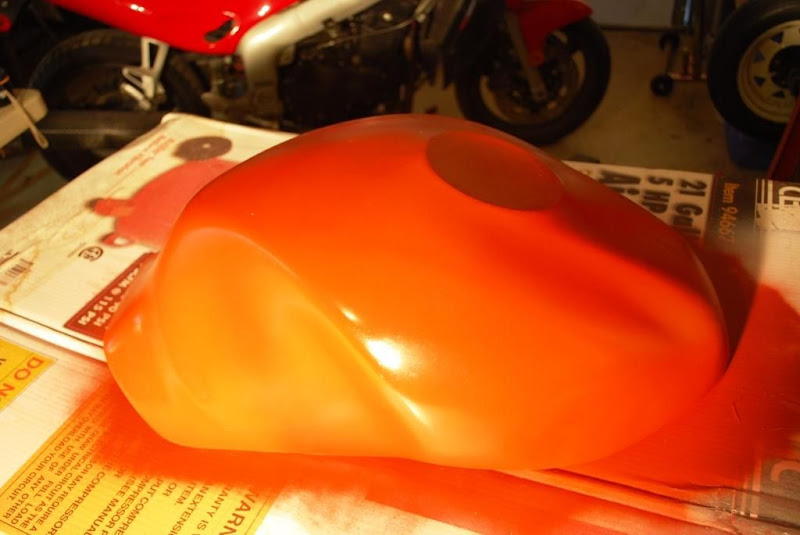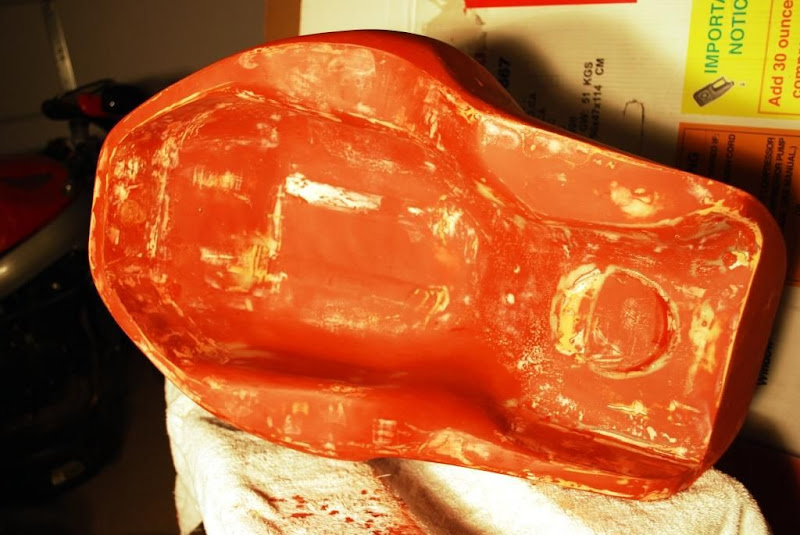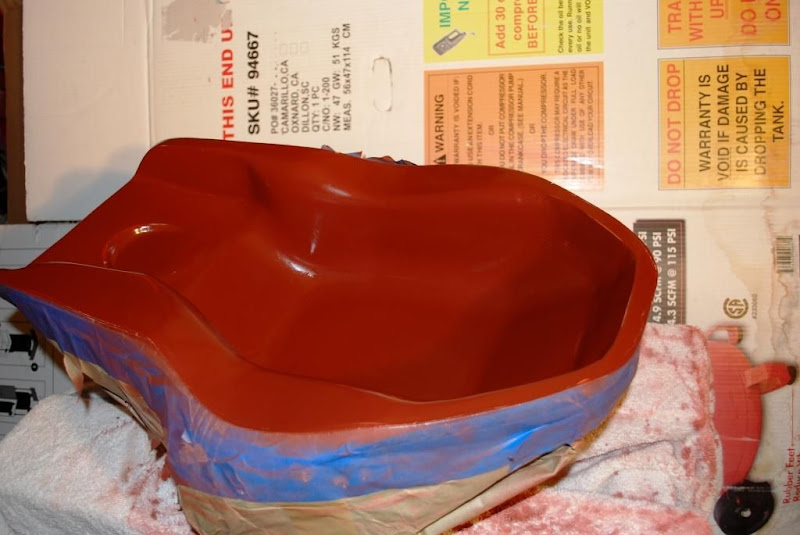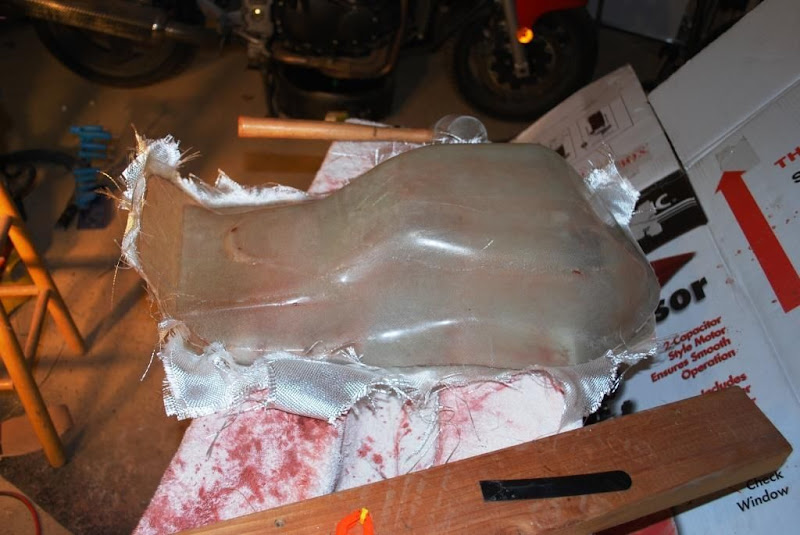Hi all, essentially first post here. I have done some reading (far from finished, lots to digest here!) and still have a few questions that will likely seem idiotic to you sagely folks =)
My project: I am working on creating a CF/Kevlar gas tank for my motorcycle. I am going to quickly detail the process that I went throug so far so if I have made any critical errors I can correct them before I begin working with my final materials.
I took the original steel tank and made a splash mold from it and subesquently made a fiberglass plug from the splash mold.
The plug:

I have made a production mold for the bottom from the plug and am still working on making the top mold which is where I currently sit. I am at the point where I am ready to begin making the production bottom while I make the top produciton mold. Here are some of my questions.
First, this is what the bottom of the tank looks like. This is still in the stage of cleaning up the plug so please be gentle with your comments =). I am only posting it so you can get an idea of the kind of shape that I am dealing with.


this is the produciton bottom mold, I am sorry its the best pic that I have and it was before trimming or any finish work.

Ok, so that is where I am at. You can see that there are several areas of compound curves on the part and this is where I am having some difficulty. I am using 3k plain weave CF for the top layer. I will have to do wet layup and just to be sure I am doing it right I will detail the process: wax/pva mold, apply epoxy until tacky, apply first layer of CF and wet it out. Repeat until all layers are in place then use peel-ply, polyfil, and vacuum bag the part for curing.
So, here are my questions:
Will a single piece of CF conform to this shape?
If so, how does one hold it in place while applying subesquent layers?
If not I know that I will need to make relief cuts, etc. How do you keep the edges from fraying and looking horrible? I know that you cut the cloth using blue masking tape, but I assume that this tape has to be removed prior to layup. How do you do that without destroying the weave?
I am sure this is just the tip of the iceberg so I will thank you all in advance for your patience and words of advice!
